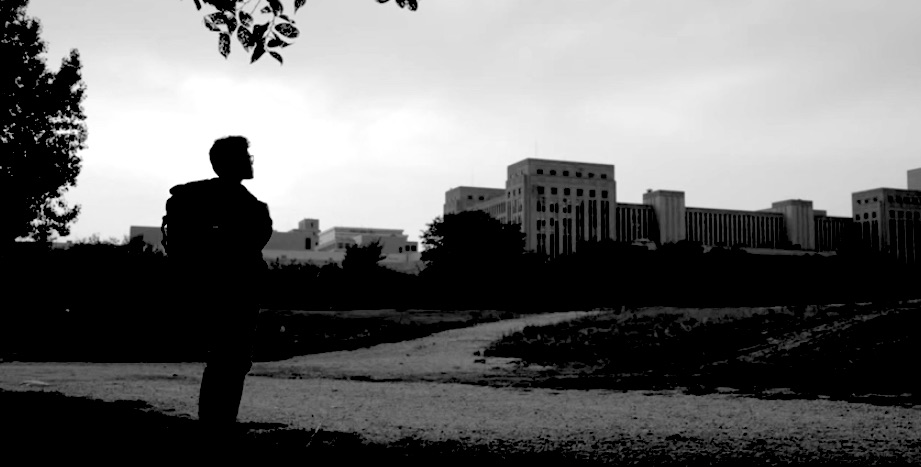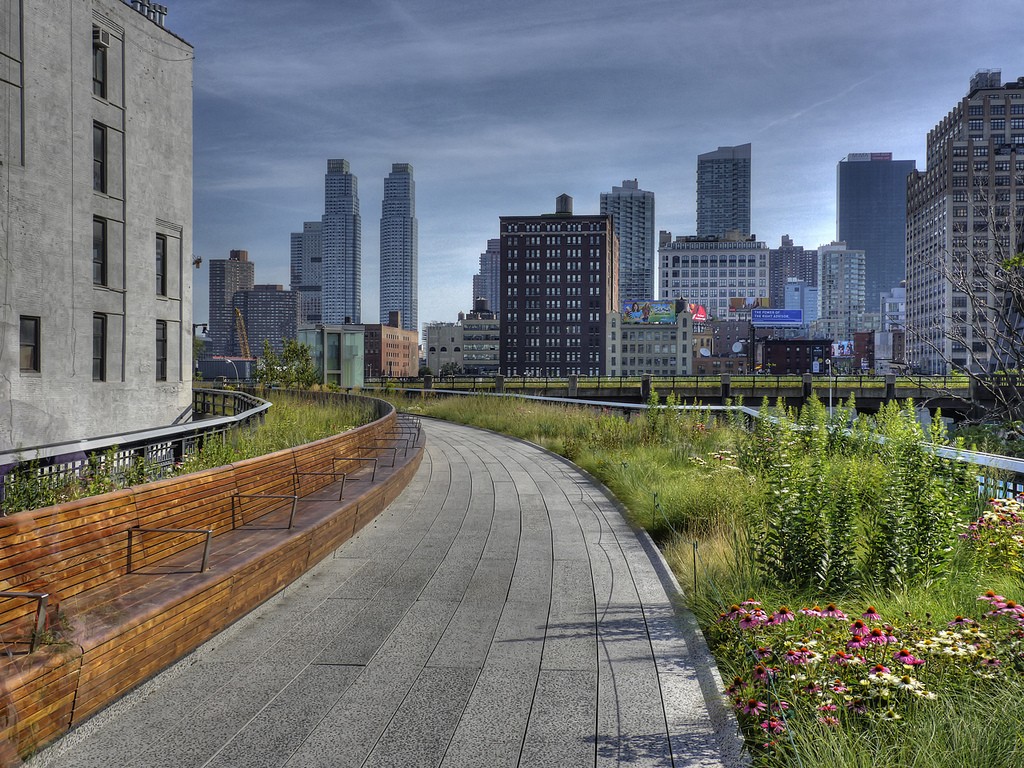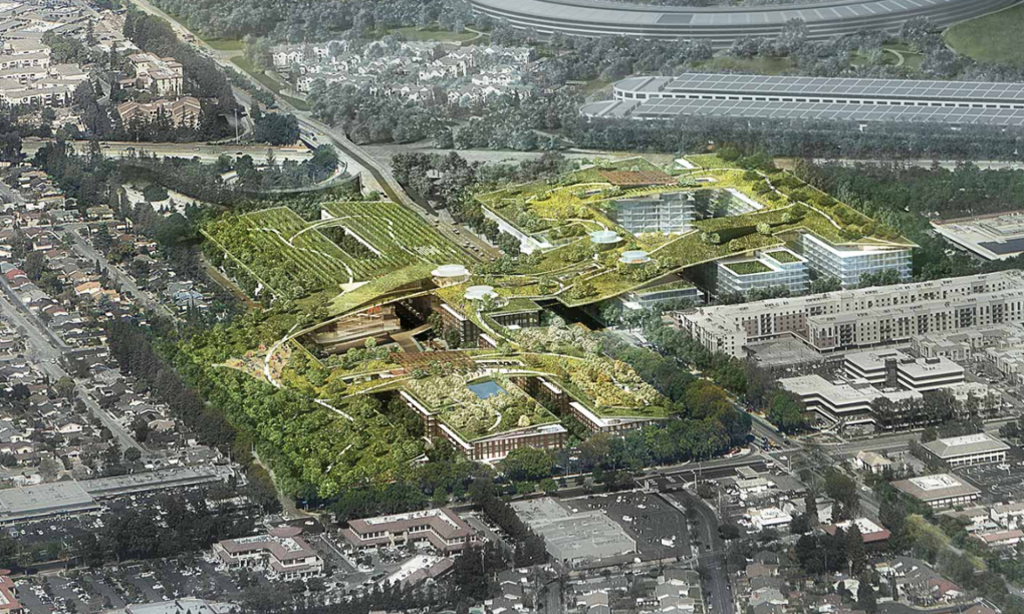
“The Future Belongs To Those Who Prepare For It” Source: American Planning Association Video
But First, An Ode to the Underdog
Cities are known for their affinity to culture, industry, business, education, design, and much more. Large urban centers like New York and Los Angeles are famously known for all of the above, while others struggle to compare. Why are certain cities better than others? What makes one person’s beloved hometown better than the next?
Not everyone can belong to a “headliner” city. Some cities are continually labeled as the “underdog,” or the “the worst x, y, or z.” It’s perfectly normal to compare your hometown to another city. It’s also fair and reasonable to move to a place that can offer you more.
But what about the people who can’t or simply don’t want to move? How can the hometown architects, artists, and planners allow their city to rise to its full aesthetic and functional potential? How can they spread a sense of pride and fulfillment to their community via the improvement of the city itself?
…And the Time-Tested Strategies
Before tackling these questions step by step, it’s important to understand how existing urbanism improvement strategies provide different tactics for approaching any challenges that a city might face.
Among the most popular of such strategies is The City Beautiful Movement. Because of its grand style and monumental impact on the built environment, the City Beautiful Movement aimed to solve problems with aesthetic empowerment. For example, the Chicago World’s Fair of 1893, also known as the “White City,” served as an iconic display for technological advances such as the light bulb and a resolution for safer and healthier cities. The fair, despite only lasting a six-months long, not only brought over 27,000 visitors, but also revitalized a city that was beginning to decay economically and instilled a new sense of design in urban planning (Wilson, 1989).
Utopias are unique solutions to urban growing pains because they are purely designed from social needs and do not use an existing city as their foundation for the ideal way to live. But isn’t it ironic that some utopias will soon become the cities that they were designed to get away from? Newness is not a permanent solution. Yet, despite their shortcomings, designs of some utopian plans and communities are still critical to understand. For instance, Ebenezer Howard’s Garden City represents an attempt at the perfect balance between land uses and therefore a perfect balance for a way of life. Between commercial, residential, recreational, and industrial, Howard shows how a city can provide access to a healthier way of life, including the use of public transportation and local resources (Fishman, 1977).
New Urbanism, learning from the ground-breaking work of Jane Jacobs in her book, The Death and the Life of Great American Cities, is a response to growing population and overcrowded living conditions. New Urbanism considers the benefits of density but also the challenges and aims to improve the living conditions of suburban sprawl. The theory focuses on producing walk-able environments where people can live conveniently and therefore sustainably because all of their basic necessities are accessible. At the same time, a certain endearing aesthetic is stressed in these “walkable neighborhoods,” as well. All in all, New Urbanism is designed for the user, a pure bottom-up design strategy (Fishman, “New Urbanism”).
Landscape Urbanism while fairly new and ever slowly emerging since the publishing of The Landscape Urbanism Reader by Charles Waldheim in 2006, this theory has become a direct opponent of New Urbanism simply because it acts against pure density in a number of ways. For instance, Ian McHarg, one of the founding fathers of this theory, strongly urges planners to build with respect to the existing natural conditions, focusing on preservation and conservation before any built development. Waldheim studied under McHarg and eventually began developing the theory further by stringing together landscape projects that pushed the boundaries for their respected context. James Corner’s highline project in New York City for example, is not necessarily preserving a pre-existing nature, but it is bringing back what was lost in the dense city fabric. He is creating a void of green that facilitates a happier and healthier environment for the surrounding neighborhood and attracts newcomers to the area. At the same time, New Urbanists like Andres Duany discourage this theory because it decreases the chance for dense, walkable neighborhoods and therefore acts against a more sustainable way of life (Duany, 2013).
Everyday and Tactical Urbanism are the two urbanist strategies that stand closest to the “bottom-up” perspective in urban planning. Everyday urbanism stresses the importance of understanding the context of the community before implementing changes in it. Furthermore, it carries the people’s subconscious into the planning process and works against formal, repetitive development. Tactical Urbanism is quite similar in that brings the public fully into the planning process, but the projects are more about instilling change and challenging authority through the effectiveness of the projects. For example, quick, temporary projects like Build A Better Block (Roberts, 2012) make impressions on the community by improving a once mundane, forgotten space into a vibrant and thriving space for the public. Even though the project is not permanent, it shows how cities don’t have to be static and that nearly any space in one’s community has the potential to improve with the right tools and the right mindset, and stands as a perfect segue to how you can make a change in your community.
Next, the Vision
City planning projects and design seem unachievable and challenging because they require a series of legal hoops to jump through and a great deal of time for planning and implementation (perhaps taking Tactical and Everyday Urbanism aside). Perhaps this is what is so frustrating for planners, designers, and the public when they approach a much-needed project; change is needed, but the solution seems unreasonable and a challenge in it and of itself. The video below, provided by the American Planning Association, captures this sensation, but also the passions for wanting to overcome those challenges and make a difference in a community.
Let’s say you make the same drive to work everyday, and you always notice a large, beaten up wall en route. Subconsciously you might wonder what would happen if this wall suddenly transformed into a beautiful attraction. You would change the perspective of every person on the same route, who might have been feeling the same way as you about that wall. Now apply that concept to something like an entire street or a park. Imagine how many lives could change or how much life could be brought back to an area. Not sure where to start? Follow these simple steps!
STEP ONE: Observe and learn what the space needs.
First of all, it’s important to remember that a city can be improved one space at a time, and that big change can come from small innovations. Before you make a change in any given space, it’s critical to study and learn it forwards, backwards, upside-down, and right-side up. By doing so, you learn what works and what doesn’t, how people interact, and where you can begin to introduce something new yet needed. Walter Hood used this strategy in his urban diary titled, “Improvisation in West Oakland, California” (Chase, 2008). Hood was patient with his design process. He practically lived in the mini-park and learned the habits of the place. This allowed him to develop deep observations, analyses, and future visions.
STEP TWO: Find what’s broken and redefine it.
Once you have taken the time to truly understand a space, it should be clear what is in need of change. Instead of getting rid of it, find a way to reuse and redefine it. For instance, Jason Roberts converted an unused space into a temporary dog park (completely foregoing any legal obligations in the process). He created a community space where a void once existed (Roberts, 2012). Another project done by his team was to reinstate the use of streetcars in Dallas which were formerly forgotten and unused. This project not only restored a piece of history for the community but also strengthened the city’s public transportation. Not to mention, this was done through the creation of a website and catchy branding!
STEP THREE: Always think contextually, for the present and future.
When thinking about context in approaching a problem, remember that a space exists within multiple scales and that every project should be site-specific. Any project you take on, whether it’s a single building or single street, still exists within the context of a neighborhood and a city. That process works in reverse as well. Taking on citywide projects should require street level attention to detail. At the same time, it is also important to remember that your project must grow in time as its surroundings do; it should not be a static piece that will become outdated. At the end of the day, in the words of the architect Jacques Herzog from his lecture at Cornell University, “if the people love it, they will maintain it” (Herzog, 2013).
STEP FOUR: Be strategic and effective.
Before getting carried away and romanticizing a series of solutions for a space, remember to stay grounded and sharp in your planning process. Be sustainable in design and action (sustainable meaning efficient in time, money, and effort). Doing so will allow for your solution to be implemented again and in other places (but in adaptive ways, of course). Projects like the City Hall AstroTurf Lawn in Boston are extremely cost and time efficient, but make a huge impact on the space for the community (DiNatale, 2015). Once barren and unused, the plaza is now covered by people playing sports, eating lunch, and lounging during the nice weather. This is a temporary solution, but it could potentially become a seasonal tradition for city-goers hosted by City Hall. This project is similar to a summer event in Rome where a series of tents are set up along the banks of Tiber River. The tents host a series of programs from bars, restaurants, art vendors, and much more. Once the summer season is over, the tents are taken down the banks soon become flooded by heavy rain. It’s a very simple way to make use of a temporary space and celebrate the city’s culture.
STEP FIVE: Be practical, but extraordinary.

“NYC ‘Highline’”
Source: Taken by Wasabi Bob on July 16, 2011. Accessed November 28, 2015. https://www.flickr.com/photos/wasabi_bob/5967508362
This step goes hand in hand with the fourth. When designing a solution, you should always keep a practical mind-set in order to keep the planning process strategic and effective; but, at the same time, you shouldn’t let that practicality deter you from creating an extraordinary solution. James Corner’s High Line project in NYC (show in the figure above), which was mentioned earlier, made use of a space that would have been challenging to remove. By bringing green space into a dense urban fabric, he created an icon for the neighborhood and New York City because it was such a fantastically executed project. Sometimes all it takes is some grass and a few benches in order to change the perspective on a given space; and while the project’s budget is criticized, the amount of attraction and land value that it has brought back to the Chelsea neighborhood adds worth. Another example of a practical yet extraordinary project is the recently revitalized Vallco Shoppping Mall in Silicon Valley. Like many shopping malls of the United States, this mall became underused and vacant since its original construction. Now it has been developed as a rooftop park, attracting a new generation of customers to the space (see figure below). The project has revitalized a once dead space in a fresh yet practical way and becomes an icon for the area (Dying Californian Mall, 2015).

“The Hills at Vallco Project”
Source: Taken by Sand Hill Property Company, Accessed November 28, 2015. http://www.theguardian.com/cities/2015/sep/18/dying-californian-shopping-mall-worlds-largest-green-roof
And Remember, Define Your Own Success
No matter which city, neighborhood, or town, there is always room for growth and improvement, and the potential for that improvement truly lies in the eye of the beholder. At the end of the day, it doesn’t really matter if New York City has 100 more top restaurants or tourist attractions. That’s not how a successful city is defined. What really matters is how the city is serving its people AND how the people are serving the city. Most people use the word “the city” as this powerful being that is to solve everyone’s problems and always exist at its best. In reality, the city needs its locals in order to thrive and grow and be at its best. Small, innovative projects are just as influential as citywide ones. No matter how big or small your solution may appear to be, the project will surely leave a lasting impression on your community if you have designed and planned with the proper ingredients and the right perspective.
Referenced and Cited Material
Chase, John, Margaret Crawford, and John Kaliski. Everyday Urbanism. Expanded ed. New York: Monacelli Press, 2008.
“A Dying Californian Shopping Mall Gets the World’s Largest Green Roof” American Planning Association, Daily Planning News, November 23, 2015. Accessed November 28, 2015. <https://www.planning.org/news/daily/story/?story_id=id:tsLujQM8D8mRivVKHwrJaWDcbDFWE_5-WyEUXOv-HlwL17riqhwNw9sT3_avJ9_Y&source_type=O>
Duany, Andres, and Emily Talen. Landscape Urbanism and Its Discontents: Dissimulating the Sustainable City. Gabriola Island, BC: New Society Publishers, 2013.
Ellin, Nan. “Urbanism-New, Landscape, or Otherwise: The Case for Complementary.”
Fishman, Robert. “New Urbansim.”
Fishman, Robert Urban Utopias In the Twentieth Century: Ebenezer Howard, Frank Lloyd Wright, and Le Corbusier. New York: Basic Books, 1977.
Herzog, Jacques “Untitled” Lecture at Cornell University, September 10, 2013. <http://aap.cornell.edu/news-events/jacques-herzog-herzog-de-meuron>
Jacobs, Jane The Death and Life of Great American Cities. [New York]: Random House, 1961.
Kristina and Larissa Larsen. “Adaptive Urbanism.”
Lydon, Mike, and Anthony Garcia. Tactical Urbanism: Short-Term Action for Long-Term Change. Washington, DC: Island Press/Center for Resource Economics, 2015.
Qadeer, Mohammad A. “Urban Development.”
Roberts, Jason. “How to Build a Better Block.” Tedx Talks Lecture, January, 2012. <https://www.youtube.com/watch?v=ntwqVDzdqAU>
DiNatale, Sara. City Hall Plaza Rolling Out New Astroturf ‘front lawn.’ The Boston Globe. July 2015. <https://www.bostonglobe.com/metro/2015/07/15/city-hall-plaza-rolling-out-new-astroturf-front-lawn/xQ7WZ1rEar1ZpexovAyigJ/story.html>
Waldheim, Charles The Landscape Urbanism Reader. New York: Princeton Architectural Press, 2006.
Wilson, William H. The City Beautiful Movement. “Chapter 3: The Glory, Destruction, and Meaning of the City Beautiful Movement.” Baltimore: Johns Hopkins University Press, 1989.
Image and Video Sources:
The Future Belongs To Those Who Prepare For It. American Planning Association, 2015. Image from video. <https://www.youtube.com/watch?v=QqRCWVR9CWI&feature=youtu.be>
The Future Belongs To Those Who Prepare For It. American Planning Association, 2015. Video. <https://www.youtube.com/watch?v=QqRCWVR9CWI&feature=youtu.be>
“The Hills at Vallco Project” Taken by Sand Hill Property Company, Accessed November 28, 2015. http://www.theguardian.com/cities/2015/sep/18/dying-californian-shopping-mall-worlds-largest-green-roof
“Lungotevere Trastevere,” taken by Anna Orlando on August 11, 2014
“NYC ‘Highline’” Taken by Wasabi Bob on July 16, 2011. Accessed November 28, 2015. https://www.flickr.com/photos/wasabi_bob/5967508362

